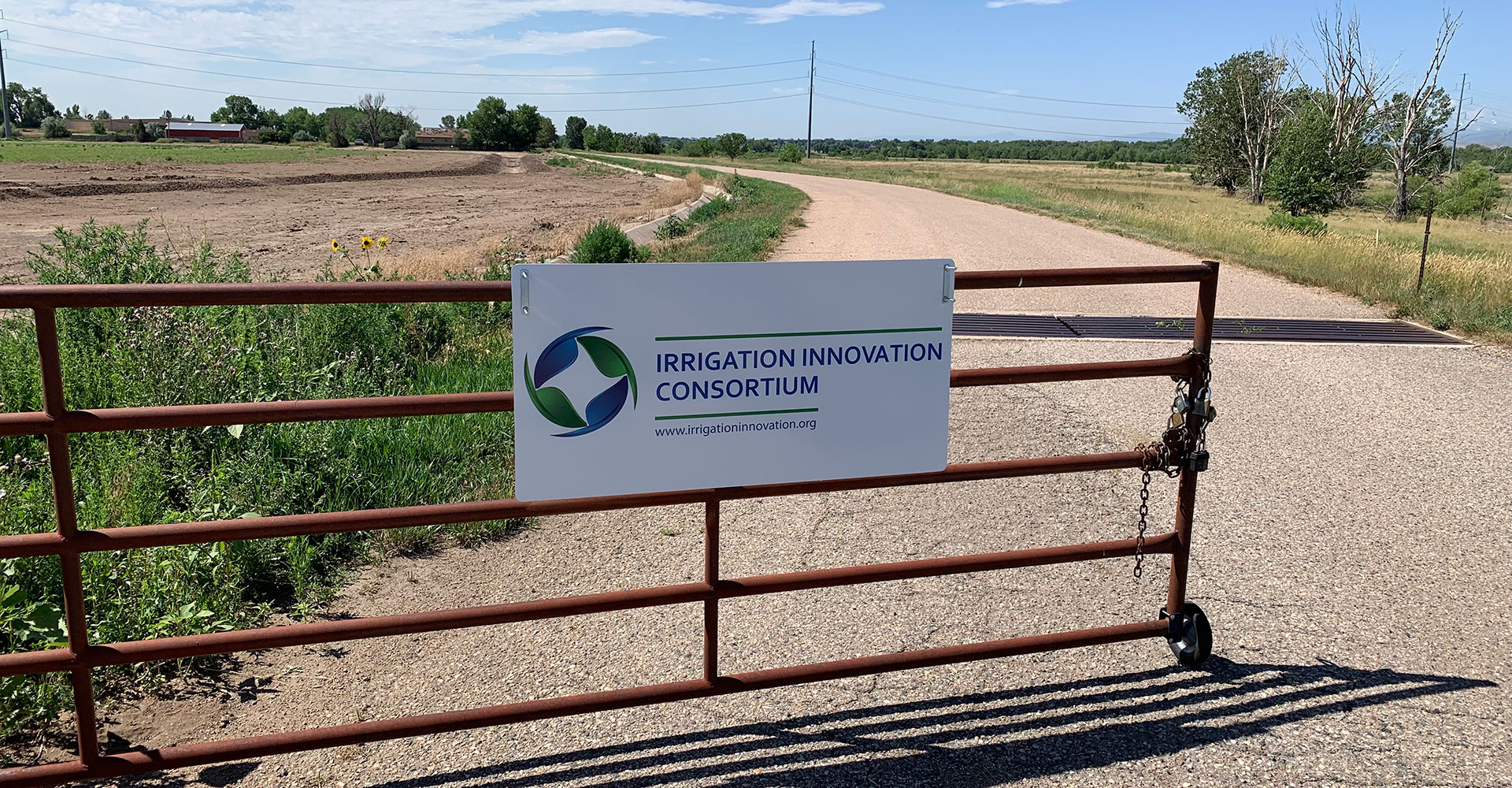
The entrance to the Irrigation Innovation Consortium Prospect site, which is being transformed into an irrigation research farm. Photo credit: A.J. Brown
At the corner of Prospect Road and I-25 in Fort Collins sits about 42 acres of uncultivated farmland, a couple of buildings, and a small weather station.
Over the next several months, this humble site will transform into a bustling research center for an ages-old technology in need of a 21st-century boost: irrigation.
The Prospect site is Colorado State University’s physical home for the Irrigation Innovation Consortium, a multi-university organization partnering with the agriculture industry to tackle the ballooning challenges of water scarcity. The CSU-led consortium was established last year through a $5 million grant from the Foundation for Food and Agriculture Research. The co-founding university partners are Texas A&M Agrilife Research, University of Nebraska-Lincoln, Kansas State, and Fresno State, and they are joined by an expanding list of industry collaborators.
“Forces of growth, demand for more water, declining groundwater, and climate change are all coming together to the point where irrigation is going to have to be more efficient, and more effective,” said Reagan Waskom, director of the Colorado Water Center, which is the consortium’s administrative head.
The goal is simple: help farmers and landscapers do more with less, by combining the practical knowledge of industry with the academic expertise of universities.
“By 2050, the world’s human population is projected to number 9.7 billion people,” said A.J. Brown, assistant director of the Irrigation Innovation Consortium and a Ph.D. candidate in irrigation management at CSU. “We need to feed 2 billion more people with the same amount of land, with less water and less chemicals. This is a steep challenge for agriculture right now. And one thing we estimate is that our yield could be boosted by 30 percent through better irrigation practices.”
Research farm
The Prospect site is being developed as a research farm to support the activities of the Irrigation Innovation Consortium. It will include a flux tower, a retention pond, pump stations, a center pivot with variable rate irrigation, and equipment for subsurface and drip irrigation, most of which will be operational by summer 2020. One end of the farm will have turf plots similar to those at partner universities, to support research across multiple locations.

Irrigation Innovation Consortium Assistant Director A.J. Brown, and Warner College of Natural Resources undergraduate Luke Engler, with the weather station at the Prospect Road research farm.
Drone flights
Over the last year, the consortium’s work has gotten underway with several research projects. For example, José Chávez, professor in the Department of Civil and Environmental Engineering at CSU, has been evaluating how unmanned aerial systems – better known as drones – can pinpoint where to apply water in specific locations in a field. Chávez, who has been running experiments at the USDA-Agricultural Research Service’s Limited Irrigation Research Farm in Greeley, plans to move his operations and drone flights over to the Prospect research farm to gather more data.
“Unmanned aerial systems provide flexibility of deployment and very high spatial resolution for water-use decision making, and sustainable agricultural productivity,” Chávez said. “However, unmanned aerial systems alone may not be sufficient.”
Chavez’ ongoing research looks at the combination of unmanned aerial systems and satellite images for monitoring crop water use and soil water deficits.
Industry pitch option
This fall and winter, the consortium’s steering committee will use a competitive process to select new projects submitted to its open call for proposals. The consortium has added a streamlined industry pitch option to encourage technology companies, large and small, to bring forward specific issues or ideas they would like to see researched. For selected pitches, the consortium will build teams involving universities and industry to come up with rapid solutions and improve agricultural and other landscape irrigation systems.
The organization’s leaders know that farmers are often bombarded with new technologies, but may be unsure whether they are worth the time and money to implement. The consortium’s work will help sort through the noise.
“Basically, the consortium’s approach is to ferret out the best ideas, either from the public or private sector, build teams around those ideas, and try to address them,” Waskom said.
Industry pitches are due Sept. 30, and standard research proposals are due Oct. 16. Selected proposals will be announced Dec. 5 in conjunction with the Irrigation Association’s annual Irrigation Show in Las Vegas.
Water in the West Symposium
Learn more about the Irrigation Innovation Consortium, and its linkages to the National Western Center redevelopment, at the Water in the West Symposium, Nov. 6-7.